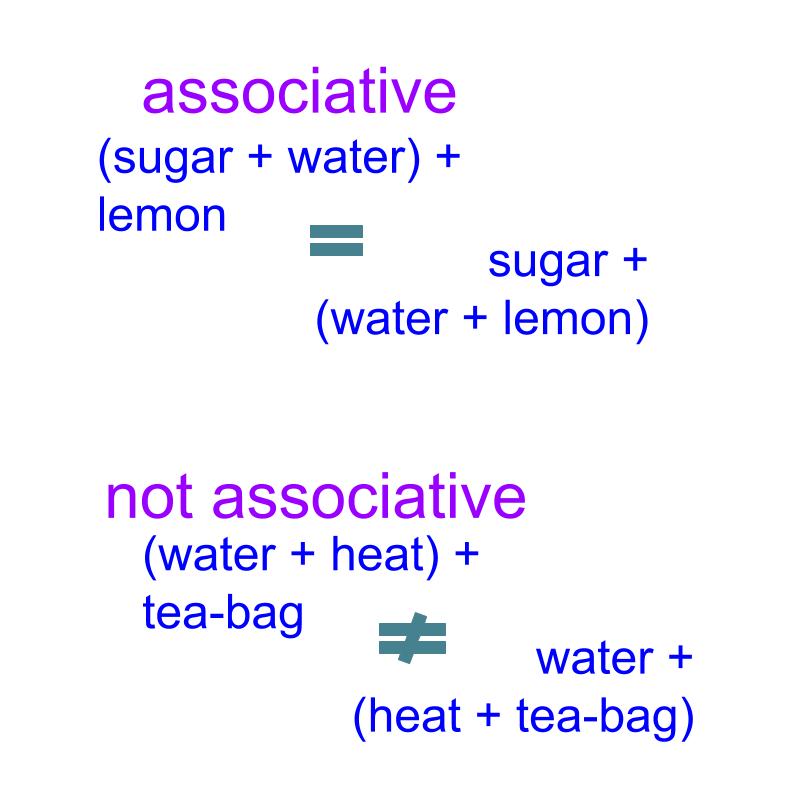
what you'll learn...
Overview
CADI Properties of Multiplication
» Closure Property
→ if , then
» Commutative Property
→
» Associative Property
→
» Distributive Property Over Addition
→
» Multiplicative Identity Property
→ , such that
» Additive Inverse Property
→ for any (except for ) such that
» Division is to be handled as multiplicative inverse for the properties
this is important as algebra extensively involves these properties
→ Commutative property involving division : is given as
→ Associative property involving division : is given as
→ Distributive property involving division : is given as
In this lesson, the laws and properties of multiplication is revised. It is very important to go through this once to understand algebra.
closure means within
For any real numbers , is a real number.

Closure Property of Multiplication: Given . .
Closure Property applied to Division: Given . .
Proof:
Given
as per Multiplicative Inverse Property
as per Closure property of Multiplication
Using Closure Property: Given , , the subexpression is a number and can be considered as a single number for any other property.
For example as per commutative property , in which is considered to be a single real number.
forward and backward
Given .

Commutative Property of Multiplication: Given , .
Commutative Property applied to Division: .
Note: Division has to be handled as inverse of multiplication, and then commutative property can be used.
Using Commutative Property: Given , the expression is simplified to . students may work this out to understand.
with this or that
Given .

Associative Property of Multiplication: Given . .
Associative Property applied to Division:
.
Note: Division has to be handled as inverse of multiplication, and then associative property can be used.
spread across
Given . Which of the following equals
The word 'distribute' means 'to share; to spread'

Distributive Property of Multiplication: Given . .
Distributive Property applied to Division: There are 3 possible scenarios. In any such scenario, convert the division to inverse of multiplication, and distributive property applies.
(1) .
(2) . The multiplication does not distribute in this case.
(3) .
In algebra, division is always given as and not . Thus commutative property, associative property, and distributive property can be used without any unintended errors.
one
Given . What is
Multiplicative Identity Property: For any , there exists such that .
Multiplicative Identity applied to Division:
Note: and so .
inverse
Given . What is ?
Multiplicative Inverse Property: For any and , there exists such that .
summary
The properties together are named as CADI properties of multiplication. The abbreviation CADI is a simplified form of the first letters of Closure, Commutative, Associative, Distributive, Inverse, and Identity properties.
Note: Distributive property is shared with addition.
The CADI properties of Addition and CADI properties of Multiplication are together referred as "CADI properties".
LPA: CADI properties of Multiplication
• Closure Property
if , then
• Commutative Property
• Associative Property
• Distributive Property Over Addition
• Multiplicative Identity Property
, such that
• Multiplicative Inverse Property
for any (except for ) such that
• Division is to be handled as inverse of multiplication for the properties
This is important as algebra extensively involves these properties.
Commutative property involving division : is given as
Associative property involving division : is given as
Distributive property involving division : is given as
Outline
The outline of material to learn "Algebra Foundation" is as follows.
Note: click here for detailed outline of Foundation of Algebra
→ Numerical Arithmetics
→ Arithmetic Operations and Precedence
→ Properties of Comparison
→ Properties of Addition
→ Properties of Multiplication
→ Properties of Exponents
→ Algebraic Expressions
→ Algebraic Equations
→ Algebraic Identities
→ Algebraic Inequations
→ Brief about Algebra